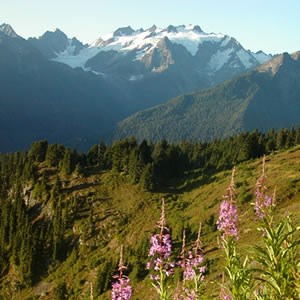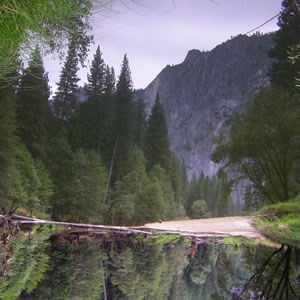- Duration:
- 3 minutes, 39 seconds
Discover world heritage preserved in iconic places across the country.

NPS Photo.
The United States established Yellowstone as a national park in 1872 and initiated the worldwide movement to protect such areas as national treasures. One hundred years later, during the Nixon administration, the United States proposed the World Heritage Convention to the international community and was the first nation to ratify it. The World Heritage Convention, the most widely accepted international conservation treaty in human history, is the American national park idea being carried out worldwide.
Currently there are 26 World Heritage Sites within the United States.
Carlsbad Caverns National Park
Cahokia Mounds State Historic Site
Chaco Culture
Everglades National Park
The 20th Century Architecture of Frank Lloyd Wright
Glacier National Park
Grand Canyon National Park
Great Smoky Mountains National Park
Hawaii Volcanoes National Park
Hopewell Ceremonial Earthworks
Independence Hall
Mammoth Cave
Mesa Verde National Park
Monticello & the University of Virginia
Moravian Church Settlements
Olympic National Park
Papahanumokuakea Marine National Monument
Poverty Point
Redwood National Park and State Parks
La Fortaleza and San Juan National Historic Site
San Antonio Missions
The Statue of Liberty
Taos Pueblo
Kluane/Wrangell-St. Elias/Glacier Bay/Tatsheshini-Alsek
Yellowstone National Park
Yosemite National Park
Voluntary Nominations
All member nations of the World Heritage Convention voluntarily nominate their own sites embracing superlative natural or cultural attributes. Among other requirements, the sites must be authentic and meet at least one of several highly stringent criteria for universal value.
Each signatory to the Convention maintains sovereignty over its sites, is responsible for their protection, and pledges to assist others in preservation efforts. Direct authority over individual properties remains with the national, state, tribal, or local government or private organization in charge.
The Secretary of the Interior, through the National Park Service, is responsible for identifying and nominating U.S. sites to the World Heritage List. Proposed U.S. sites must be either federal property, such as national parks, or sites already designated as national historic landmarks or national natural landmarks. Properties not owned by the federal government are nominated only if their owners wish to do so and pledge to protect their property in perpetuity.
While maintaining authority over their own parks, the United States and Canada jointly nominated two World Heritage Sites: Waterton-Glacier and Wrangell-St.Elias/Glacier Bay/Tatshenshini-Alsek/Kluane. The designations underscored the mutually beneficial interaction among the bordering parks in long-term resource management and in such day-to-day activities as mountain and river rescue operations.
The Convention is based on key principles. Each nation retains sovereignty and control over its World Heritage Sites. All participating nations pledge to identify and and protect their key natural and cultural sites as part of the heritage of humanity and to cooperate with each other to achieve that goal.
By 2023, 195 nations had ratified the World Heritage Convention, and 1193 sites in 166 countries had been placed on the World Heritage List.

NPS photo by Keri Leaman.
Periodic Reporting
Under the World Heritage Convention, both the United States and Canada are required to submit a country-specific periodic report and a joint regional periodic report for North America. Periodic reporting provides the World Heritage Committee with an overview of each participating nation's implementation of the World Heritage Convention and a "snapshot" of current conditions at World Heritage properties.
Additional Information
The World Heritage Committee is a 21-nation body elected from among all those that have ratified the convention to carry out its program of recognition and mutual assistance. The committee reviews nominations by member countries to the World Heritage List and designates World Heritage Sites.
Through the World Heritage Fund, the committee can provide countries requesting assistance with studies, advice, training, and equipment in order to eliminate problems, restore damaged areas, and set up safeguards.
The committee also places properties on a List of World Heritage in Danger. This action may be taken in view of such threats to the sites as natural disasters or civil strife.
The committee's role, however, is limited to placing sites on both lists and offering technical advice and assistance. Inclusion on the List of World Heritage in Danger imposes no legal requirements but can alert others about concerns at the endangered sites.
Last updated: November 15, 2024
